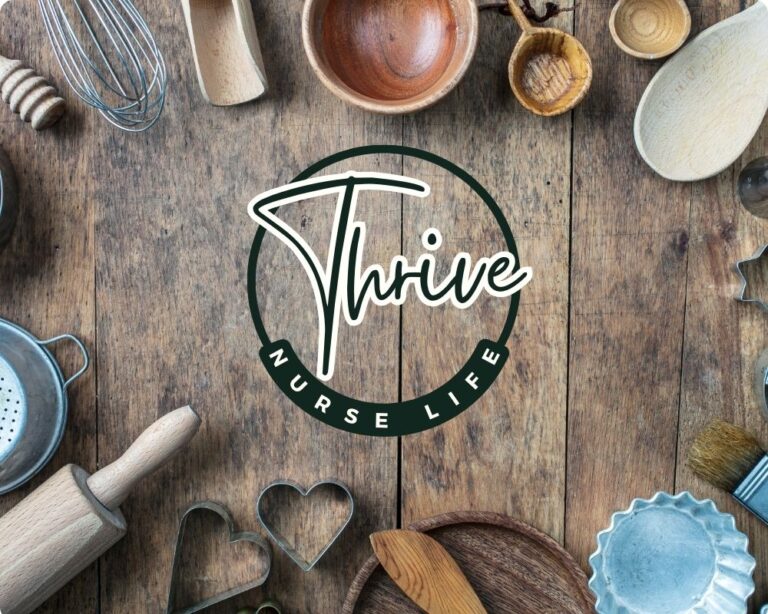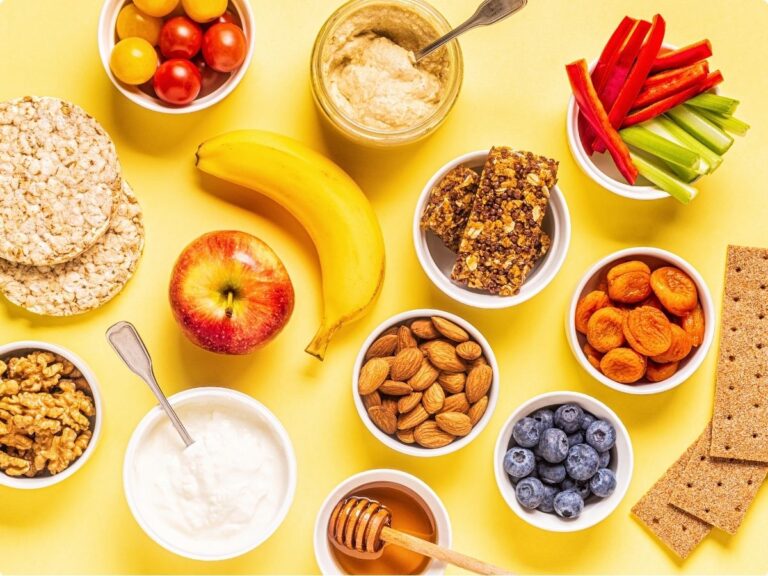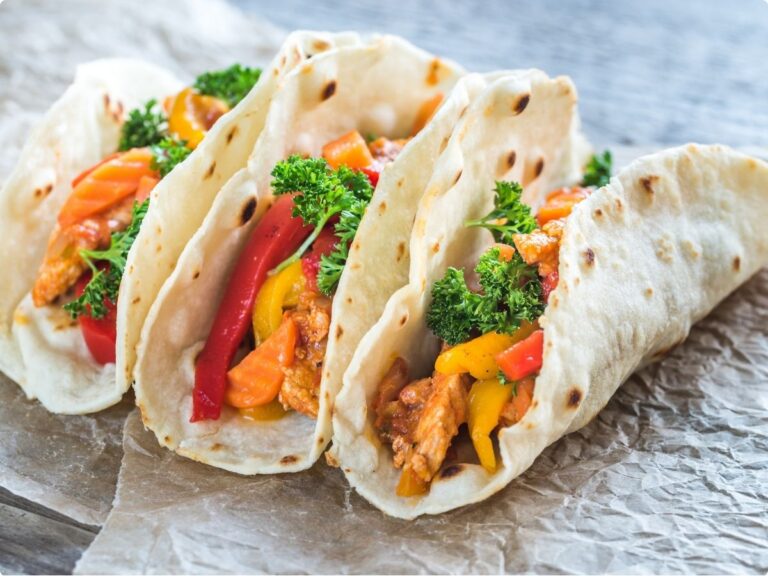Mindful Eating Practices for Nurses
The 10-Minute Lunch Sprint: A Nurse’s Mealtime Reality
You’ve been running around for six hours, your bladder is on the verge of declaring an emergency, and you just finished charting notes that look suspiciously like ancient hieroglyphics. Then, suddenly, it happens—you spot a brief opening in your shift, just enough time to shovel in whatever food is within arm’s reach. Sound familiar?
For most nurses, meal breaks are more of a tactical mission than a relaxing experience. Between patients, call lights, and the ever-looming threat of a code blue, eating becomes a functional activity—like refueling a car at a pit stop. And let’s be honest, we’ve all inhaled a protein bar so fast it practically bypassed the chewing phase entirely.
But what if eating wasn’t just another rushed task on your to-do list? What if, instead of treating food as an afterthought, you used it as a moment of self-care—a way to recharge both your body and mind? That’s where mindful eating practices for nurses come in.
Why Nurses Need Mindful Eating (Even If You Only Have Five Minutes)
Mindful eating isn’t about dieting or measuring out exactly 28 almonds to achieve peak enlightenment. It’s about being present with your food—actually tasting it, noticing how it makes you feel, and making choices that fuel your body rather than just silencing hunger pangs.
For nurses, who often exist in a high-stress, high-adrenaline environment, mindful eating can offer some surprising benefits:
- More energy for long shifts (because living off coffee and graham crackers from the break room is not a sustainable nutrition plan).
- Better digestion (since swallowing food whole like a starving seagull doesn’t exactly help nutrient absorption).
- Less stress eating (because let’s be real, we’ve all attacked a bag of chips after a particularly brutal shift).
In this post, we’ll explore three simple mindful eating practices for nurses that fit into even the busiest of schedules. No complicated meal plans, no judgment—just practical strategies to help you feel more energized, satisfied, and in control of your eating habits. Whether you have a full lunch break (rare) or just a few minutes between call bells (more likely), these tips will help you make the most of your meals.
So take a deep breath, put down that stale granola bar for a second, and let’s dive in.
Slow Down and Savor Your Meals (Yes, Even in a Hospital Cafeteria)
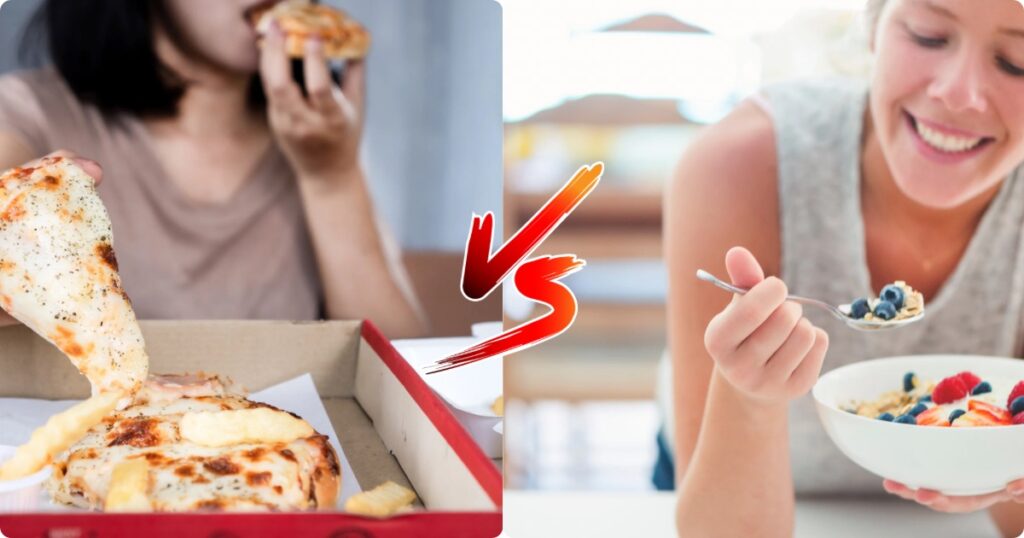
The Art of Inhaling Food: A Nurse’s Natural Talent
If there’s one thing nurses do better than most, it’s eating at the speed of light. Between call lights, charting marathons, and the ever-present risk of an interrupted lunch break, we’ve all perfected the skill of shoveling food into our mouths like we’re in a competitive eating contest.
But here’s the catch: your body isn’t built for speed-eating. When you eat like someone just hit the “fast forward” button, your digestion suffers, your brain doesn’t register fullness in time, and suddenly you’re reaching for a snack an hour later—because, shocker, you barely tasted your food in the first place.
That’s why slowing down is one of the most effective mindful eating practices for nurses—and it’s easier than you think, even during a chaotic shift.
Why Speed-Eating Is Draining Your Energy
Ever scarf down a meal only to feel sluggish and uncomfortable afterward? That’s because your gut needs time to do its job. When you eat too fast:
- Your stomach and brain don’t sync up, leading to overeating before you even realize you’re full.
- Your digestion takes a hit (hello, bloating and acid reflux).
- Your blood sugar spikes and crashes, leaving you more exhausted mid-shift than before you ate.
As a nurse, you don’t just need food—you need fuel that lasts. Mindful eating helps your body absorb nutrients better, giving you the steady energy you need to survive a 12-hour shift (or at least make it through the last few hours without fantasizing about a nap).
How to Eat More Mindfully (Even If You Only Have 5 Minutes)
Let’s be real: you’re probably not sitting down for a slow, candlelit dinner at work. But even small tweaks can make a difference:
- Chew each bite at least 20 times. (Yes, it sounds excessive. No, you don’t have to count out loud.)
- Put your utensils down between bites. It forces you to slow down.
- Take one deep breath before eating. This shifts your body into “rest and digest” mode instead of “shove it in and go” mode.
- Use your senses. Notice the texture, flavor, and temperature of your food—it makes eating way more satisfying.
A Quick Nurse Hack: The “First Five Bites” Rule
If you’re short on time (which, let’s face it, you are), try this:
For your first five bites, slow down. Focus on chewing, breathing, and actually tasting your food. After that, if you have to speed things up, fine—but at least you gave your body a chance to process some of what you’re eating.
Making It Work in Your Nurse Life
Mindful eating doesn’t require extra time—just a shift in how you eat. And if you’re looking for more ways to maintain energy on long shifts, check out our guide on quick homemade salad dressings to make meal prep faster and healthier.
Plan and Portion Meals with Intention (Because Break Room Snacks Don’t Count as a Meal)
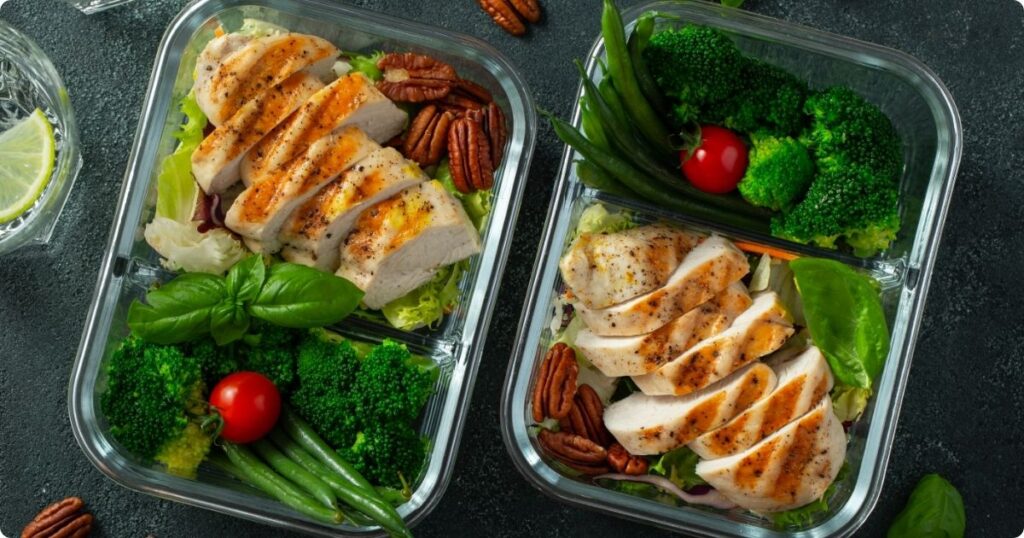
The “Whatever’s in the Break Room” Diet: A Nurse’s Worst Habit
Raise your hand if this sounds familiar: You finally get a second to eat, but instead of enjoying a balanced meal, you scavenge whatever is lurking in the break room—half a doughnut from morning rounds, some questionable graham crackers, and a handful of peanut butter packets.
It’s a survival tactic, sure. But relying on random hospital snacks (or worse, vending machine roulette) isn’t doing your energy levels—or your digestion—any favors. One of the best mindful eating practices for nurses is planning meals with intention so you’re not at the mercy of whatever’s left in the fridge at 3 AM.
Why Meal Prepping is a Game-Changer for Nurses
We get it—meal prepping sounds like one more task on your never-ending to-do list. But before you roll your eyes, consider this:
- More control over nutrition = fewer crashes and cravings mid-shift.
- Less stress = no more scrambling for food when hunger hits.
- More time = because let’s be honest, choosing between meal prep and extra sleep shouldn’t be a daily battle.
Mindful eating isn’t just about how you eat—it’s about setting yourself up for success before hunger takes over. A little bit of planning ensures that when you do eat, you’re fueling your body with foods that actually support your energy levels instead of spiking your blood sugar and leaving you drained an hour later.
Easy Ways to Meal Prep Without Losing Your Weekend
The idea of meal prepping for an entire week might sound like a lot, but it doesn’t have to be complicated. Here’s how to make it work:
• Prep in batches. Make double portions of meals and store them in glass meal-prep containers to keep food fresh and easy to grab.
• Keep it simple. You don’t need gourmet meals—think protein + veggie + healthy fat. A prepped salad, a grain bowl, or even a wrap can do the trick.
• Portion wisely. Pre-pack meals into grab-and-go containers so you’re not stuck making decisions when you’re already exhausted.
A Quick Nurse Hack: The “Emergency Snack Pack”
Even the best meal plan won’t help if your shift is too busy for a real break. That’s where the emergency snack pack comes in. Keep a stash of pre-portioned nuts, protein bars, or dried fruit in your bag so you have something healthy to reach for instead of whatever’s leftover from the last potluck.
Making It Work in Your Nurse Life
Planning your meals isn’t about perfection—it’s about giving yourself the best chance to eat well, feel good, and sustain your energy through long shifts.
Looking for quick meal ideas that won’t take hours to prep? Check out our easy salad recipes for nurses for meals that stay fresh and taste great, even after a long shift.
Recognize Hunger vs. Stress Eating
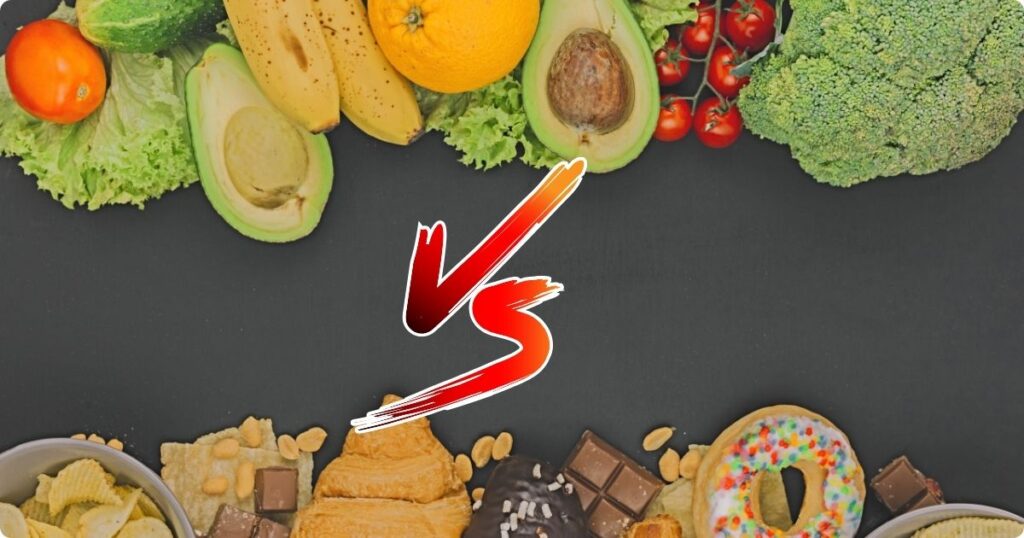
The Post-Shift Snack Spiral: Are You Actually Hungry?
You’ve just survived a 12-hour shift. Your feet are screaming, your brain is fried, and you walk through your front door with one goal: devour whatever is within arm’s reach. Before you know it, you’ve inhaled half a bag of chips, a protein bar, and a handful of chocolate—only to realize you’re still not satisfied.
Sound familiar? Mindful eating practices for nurses aren’t just about what you eat—they’re about understanding why you’re eating in the first place. There’s a big difference between true hunger and stress eating, and if you’ve ever found yourself deep in the break room snack stash without remembering how you got there, this one’s for you.
The Hunger vs. Stress Test: How to Tell the Difference
Not sure if you’re actually hungry or just looking for a distraction? Try this:
- True hunger builds gradually and comes with physical cues—like a rumbling stomach or low energy.
- Stress eating hits suddenly and usually comes with a craving for something specific (and usually high in sugar, salt, or fat).
- True hunger means any food sounds good—grilled chicken, veggies, a well-balanced meal.
- Stress eating makes you zero in on one thing (hello, cookies and fries) and often leaves you feeling guilty afterward.
How to Avoid Stress Eating on a Nurse’s Schedule
Nurses deal with an absurd amount of stress—so it’s no surprise that food sometimes becomes a coping mechanism. But stress eating doesn’t actually fix stress; it just adds another layer of exhaustion, sugar crashes, and regret. Instead, try these mindful strategies:
- Pause before you eat. Take a deep breath and ask yourself, Am I actually hungry, or just overwhelmed?
- Use the HALT method: If you’re about to grab a snack, check if you’re Hungry, Angry, Lonely, or Tired. If it’s not hunger, try addressing the real issue.
- Hydrate first. Thirst is often mistaken for hunger, so drink some water and see if the craving passes.
A Quick Nurse Hack: The “Two-Minute Distraction” Rule
Before diving into stress snacking, give yourself two minutes to do something else—walk around, stretch, sip some water. If you’re still hungry after that, go for a nutritious snack. If the craving disappears, you probably weren’t really hungry.
Making It Work in Your Nurse Life
Recognizing hunger vs. stress eating is a game-changer for mindful eating practices for nurses. It helps you stay energized, avoid unnecessary sugar crashes, and actually enjoy your food instead of eating on autopilot.
Understanding hunger is one of the most underrated mindful eating practices for nurses. When you fuel your body for what it actually needs, you’ll feel better, work better, and—bonus—avoid eating half a bag of snacks without realizing
Making Mindful Eating Practices for Nurses a Daily Habit

Small Shifts, Big Impact: How to Eat with Intention (Even on a 12-Hour Shift)
Let’s face it—nurses don’t exactly get the luxury of long, peaceful meal breaks. More often than not, eating is crammed between patient rounds, charting marathons, and the occasional “Did I even eat today?” moment. But here’s the thing: mindful eating practices for nurses don’t require extra time, just a shift in approach.
By slowing down, planning meals with intention, and recognizing true hunger, you can transform your eating habits without adding one more thing to your already packed schedule. It’s not about being perfect—it’s about finding small, sustainable ways to fuel your body in a way that actually works for your lifestyle.
The Quick Recap: Your Mindful Eating Checklist
If your brain is too fried to remember everything we just covered (totally understandable), here’s your fast-track guide to putting mindful eating into practice:
- Slow down. Take a breath before eating, chew your food properly, and actually taste it.
- Plan ahead. Pre-pack meals and snacks so you’re not left with break room scraps.
- Recognize real hunger. Check in with yourself before reaching for a snack—are you truly hungry or just stress-eating?
Even if you only apply one of these practices, you’ll feel the difference. More energy. Fewer sugar crashes. Less “Why did I just eat an entire sleeve of graham crackers?” regret.
Mindful Eating is Self-Care (And Nurses Deserve That, Too)
Nurses spend all day taking care of others—often at the expense of their own well-being. But how you eat matters just as much as what you eat. When you prioritize mindful eating, you’re not just fueling your body; you’re giving yourself a moment of intentional self-care in the middle of chaos.
So, next time you grab a bite between patients, take a second to pause. Breathe. Chew. Actually taste your food. It won’t change the chaos of the hospital, but it will change how you feel—during and after your shift.
What’s One Small Change You Can Make Today?
Mindful eating isn’t an all-or-nothing practice—it’s about small steps that add up. Which of these strategies do you think you can try today? Share your thoughts in the comments—we’d love to hear how mindful eating is working for you!



